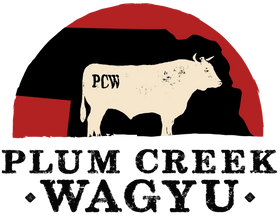Wagyu vs. Kobe Beef: What’s the Difference?
When it comes to premium beef, two names stand out: Wagyu and Kobe. While they’re often used interchangeably, they’re not the same. Understanding the distinctions can help you appreciate the unique qualities of each and make an informed choice for your next indulgent meal.
What is Wagyu?
"Wagyu" translates to "Japanese cow," and it refers to four specific breeds of cattle: Japanese Black, Japanese Brown, Japanese Polled, and Japanese Shorthorn. Wagyu cattle are renowned for their rich marbling, which results in unmatched tenderness, juiciness, and flavor. This luxurious fat distribution is due to meticulous breeding, a high-energy diet, and a stress-free environment.
Wagyu beef is produced worldwide, including in Japan, the United States, and Australia. Each region’s beef varies slightly based on factors like feed, climate, and breeding practices. However, the term "Wagyu" is broad and encompasses a variety of beef products within these breeds.
What is Kobe Beef?
Kobe beef is a specific type of Wagyu beef that comes from the Tajima strain of Japanese Black cattle, raised exclusively in Japan’s Hyōgo Prefecture. The name "Kobe" is protected by strict regulations, and only beef meeting rigorous criteria can bear the Kobe name.
To qualify as Kobe beef:
-
The cattle must be purebred Tajima Wagyu.
-
They must be born, raised, and slaughtered in Hyōgo Prefecture.
-
The beef must meet strict marbling and quality standards, typically achieving an A4 or A5 grade.
-
It must be certified by the Kobe Beef Marketing and Distribution Promotion Association.
This exclusivity makes Kobe beef rarer and more expensive than general Wagyu.
Key Differences
-
Origin: All Kobe beef is Wagyu, but not all Wagyu is Kobe. Wagyu can come from various regions and breeds, while Kobe is strictly tied to Hyōgo Prefecture and the Tajima strain.
-
Grading Standards: Kobe beef adheres to some of the highest grading standards in the world, ensuring exceptional marbling, flavor, and texture. While Wagyu beef is also graded, the standards and quality may vary depending on the producer and region.
-
Availability: Kobe beef is much rarer than Wagyu. In fact, only a limited number of certified Kobe beef cattle are slaughtered annually, making it a delicacy even within Japan.
-
Price: Due to its rarity and stringent requirements, Kobe beef often commands a higher price than other Wagyu varieties.
Similarities
Both Wagyu and Kobe are prized for their:
-
Exceptional marbling, which delivers a buttery texture and rich flavor.
-
Unique fat composition, high in unsaturated fats, which melts at a lower temperature and enhances the taste.
-
Meticulous care in breeding, feeding, and raising the cattle.
How to Choose Between Wagyu and Kobe
When deciding between Wagyu and Kobe, consider your priorities:
-
If you want the pinnacle of exclusivity and tradition, Kobe beef is the ultimate choice.
-
If you’re looking for a luxurious beef experience with more options and variety, Wagyu offers plenty of outstanding cuts and price points.
Conclusion
While Wagyu and Kobe beef share a heritage of excellence, their differences lie in origin, grading, and exclusivity. Both offer a dining experience that’s second to none, making either choice a celebration of culinary luxury. Whether you’re indulging in Wagyu or splurging on Kobe, you’re in for an unforgettable treat.
Related Posts
How We Select and Age Our Wagyu Beef for Optimal Flavor
Learn about the process of selecting and aging Wagyu beef at Plum Creek Wagyu. Discover the differences between dry-aging and wet-aging and how each method enhances the flavor and tenderness of our premium Wagyu cuts.
How We Select and Age Our Wagyu Beef for Optimal Flavor
Learn about the process of selecting and aging Wagyu beef at Plum Creek Wagyu. Discover the differences between dry-aging and wet-aging and how each method enhances the flavor and tenderness of our premium Wagyu cuts.
Sustainable Ranching at Plum Creek Wagyu: Our Eco-Friendly Practices
Discover Plum Creek Wagyu’s commitment to sustainability and eco-friendly ranching practices. Learn about our efforts in land stewardship, water conservation, and reducing our carbon footprint to produce premium Wagyu beef responsibly.
Behind-the-Scenes at Plum Creek Wagyu: From Pasture to Plate
Discover the life cycle of a Plum Creek Wagyu cow, from birth to plate. Learn about the care, feeding, and stress-free environment that contributes to the exceptional quality of our Wagyu beef.
Wagyu Beef vs. Kobe Beef: What’s the Difference?
Curious about the difference between Wagyu and Kobe beef? Learn how these two premium beef types differ in terms of origin, quality, and flavor, and discover why Kobe beef is considered the gold standard of luxury dining.
The Science Behind Wagyu Marbling: Why It’s So Special
What makes Wagyu beef so incredibly tender and flavorful? The secret lies in its marbling. Discover the science behind Wagyu’s signature fat distribution and why it creates the ultimate steak experience.








